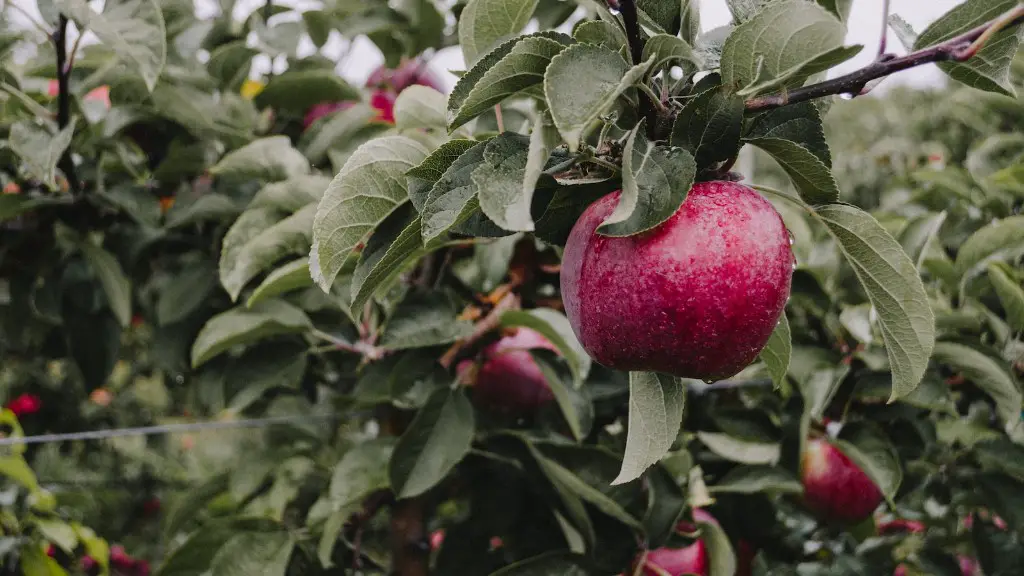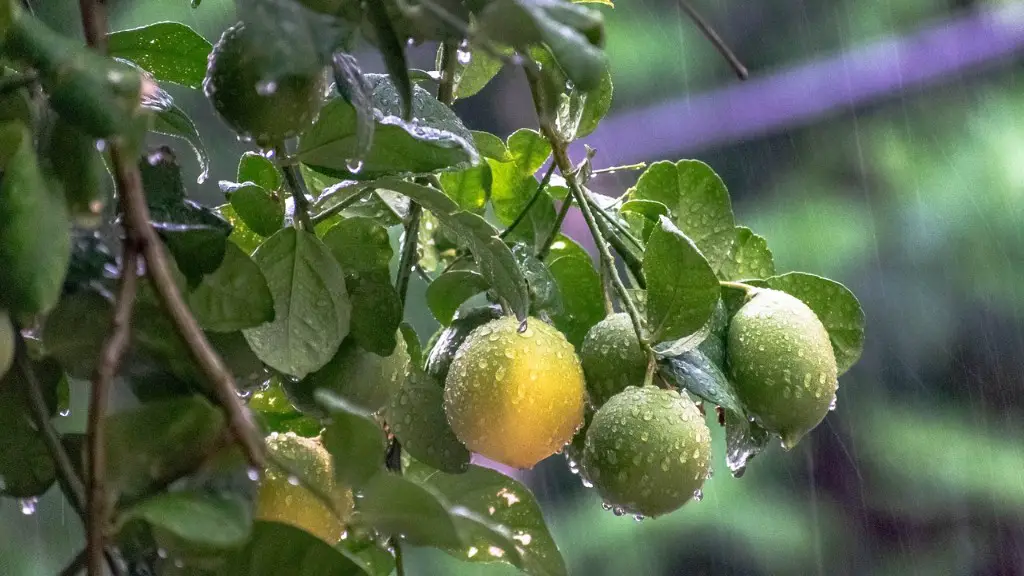Adopting apple trees and cultivating them as part of your landscape can be an enjoyable experience that not only provides you with basic wellbeing and joy, but it can also have a close tie to nature. Identifying an apple tree can be a simple process and profitable venture for any person who has the adequate knowledge about the tree structure and species. Even for the seasoned gardeners, it is important to practice the correct procedure in order to identify an apple tree.
Firstly, the most indicative and recognized aspect to identify the tree species is by studying its physical characteristics and silhouette. Apple trees usually have an appearance that consist of smooth, gray colored bark and a strong trunk. The protruding branches and straight twigs reaching towards the sky give the apple tree a signature shape. Apple trees have white flowers with five petals, that bloom in the spring and are a clear indication of the species.
Another indication of the species lies in its leaves. Apple leaves are styled uniquely with wedge-shaped teeth, commonly referred as saw-tooth edges. Moreover, the shape of the leaves is lanceolate, which means it has an elongated structure that is widest in the middle and pointed at the tips. The color of the leaves alternates from silver-green to deep green depending on the maturity.
Furthermore, checking the surrounding environment can be beneficial when identifying an apple tree species. Most apple trees grow in a temperate region with plenty of sun and regular rainfall, as these conditions play a vital role in the bearing of the fruits. Apple trees grow up to 25-30 feet in height and bear round, red fruits that turn golden yellow when mature. The fruits have a sweet and slightly tart flavour, with a strong aroma.
Finally, you can use the practices mentioned above to identify the apple tree successfully. The most important thing to ensure when identifying an apple tree is not to be in a rush. Make sure to properly analyze the tree and its features to be certain about its species.
Types of Apple Trees
As with all fruit trees, there are several different types of apple trees that bear particular products. Some of the most common types of apples include the Red Delicious, Golden Delicious, McIntosh, Gala, and Granny Smith. These apples vary in shape, size and taste. While Red Delicious apples are known for their bright red hue and sweet flavor, Granny Smith apples are tart, crunchy and bright green in color. All apple trees require a certain degree of climate and soil conditions to produce quality produce.
In addition to the type of apples produced, there are two major types of apple trees – dwarf apples and standard apples. Dwarf apple trees grow up to 8-10 feet tall which makes them easier to handle and maintain, while a standard apple tree can grow anywhere up to 30 feet. As the name suggests, a dwarf apple tree produces smaller size fruits but less in number, whereas the standard apples tree produce more fruits of larger size.
Although they share some similarities in terms of growing conditions, the types of apples trees also have unique requirements for successful growth and fruiting. For example, some of the dwarf apple varieties need another variety for cross-pollination and would benefit from one or more other dwarf varieties planted nearby as companion plants. Interestingly, some of the standard-sized varieties do not need a partner for pollination and will produce fruits on its own.
All apples trees require pruning during the winter and spring months, before the buds swell and have just started to break. Pruning the tree helps it to stay healthy, boosts the overall size and production of the apple tree, and keeps it disease-free. Additionally, proper fertilization is necessary to ensure the tree receives all the important macro and micro-nutrients it needs to stay healthy and vigorous.
Importance of Apple Trees
Although considered to be a common type of fruit tree, apple trees play an important role in our environment. In addition to their aesthetic beauty, they provide us with a variety of culinary and health benefits. One of the most notable benefits of apples is their ability to help aid digestion and promote good gut health. Apple trees also produce oxygen which helps with the production of clean air in the environment. Further, apples trees also serve an important role in that they act as a home for birds and other pollinators, such as bees and butterflies.
Apple trees can also be used as an inexpensive and easy way to add value to a property. When managed properly and kept healthy, the apple tree will produce beautiful blooms in the early spring, fruit in the late summer, and gorgeous foliage throughout the fall. Some people even opt to grow an apple tree for its therapeutic benefits. The act of tending to the tree on a regular basis can provide people with moments of stillness that can be quite calming and therapeutic.
Perhaps one of the most important aspects of apple tree cultivation is its contribution to the local economy. Apple trees can provide income through the sale of the produce, such as apples and apple cider. In addition, many local stores and restaurants have started to serve dishes and beverages featuring local apples, allowing the local community to benefit from the apple tree’s harvest.
Reasons for Growing an Apple Tree
Growing an apple tree in your backyard or garden can be a joyful and rewarding experience. Not only are apple trees gorgeous to look at but they offer so many other benefits to the environment, such as oxygen production, promotion of pollinators, and helping to purify the air. For many people, apple trees are also a symbol of a simpler life and evoke memories of childhood. Moreover, apple trees provide a variety of culinary and health benefits to people when they are producing fruits. Here are a few reasons why you might consider growing an apple tree:
- Health Benefits: Fruits such as apples are loaded with vitamins and minerals necessary for healthy growth, development and disease prevention. Apples are also known for their gut-healthy properties, as the fibers present in apples can help maintain regularity and aid digestion.
- Beautiful Aesthetics: Apple trees are known for their beautiful white blooms that often cover the branches during the spring months. During the summer and autumn months, apple trees will be producing fruit, further adding to its beauty. Further, the vibrant and changing foliage of the apple leaves, from silver-green to deep green, makes them a beautiful addition to any landscape.
- Connection to Nature: Growing an apple tree in your backyard or garden is a great way to connect to nature and find moments of inner stillness and peace. Spending time in nature and tending to the tree has been shown to be beneficial to mental and physical wellbeing, reducing stress and depression.
- Unique Taste: Another major factor to consider when growing an apple tree is the flavor of the apples. Unlike store-bought apples, homegrown apples tend to be juicier and have an intense and robust flavor.
- Economic Benefits: Growing and harvesting an apple tree can also provide economic benefits to the local community. Apples are a popular item and are often used in dishes, desserts, and beverages. Thus, the sale of apples can help contribute to the local economy.
Care for Apple Trees
Once you have acquired some apple tree saplings, the next step is to make sure that you provide the tree with the proper care and maintenance to ensure it is successful and healthy. To begin, it is important to have an area in your garden that receives full sun and has adequate moistening. Apple trees thrive in loamy soil and good air circulation, which can be achieved by spacing the trees 10-15 feet apart. The soil should also be tested to check the pH and nutrient levels, to ensure the soil is suitable for apple tree cultivation.
During the many stages of the tree’s life cycle, it is important to provide regular pruning. Pruning helps to stimulate the growth, reduce the risk of diseases, and ensure the tree remains healthy and vigorous. Additionally, the trees must be irrigated regularly. Irrigation helps to avoid nutrient deficiencies and address any water stress the tree might be facing. It is also important to monitor the environment and apply different methods of pest control, as there are a variety of insects which may damage the tree and the fruits.
It is important to note that, although the tree is generally pest-resistant, different pests and diseases can still attack apple trees. Therefore, it is recommended to use a properly formulated insecticide every month to prevent any possible infection. With the proper maintenance and care, apple trees can live for more than 100 years, allowing them to provide countless generations with their healthy and delicious fruits.
Harvesting Apples
When the apple fruits are fully grown and ready to harvest, it is important to ensure you handle them properly. Begin by inspecting the apples and discarding any that have been affected by pests or diseases. The remaining apples should be gently brushed to remove any dirt and then inspected again for any blemishes or dark spots. Apples should not be washed before harvesting as it will easily damage them.
Once they have been inspected and deemed fit to harvest, apples should be cut off the tree with a pruning saw or scissors. It is important not to twist or pull the fruits, as this may damage the tree or the fruits. After harvesting, the apples should be stored in a cool, dry place to allow them to continue to ripen. To ensure the quality and freshness of the apples, it is best to use them within a week of harvesting.
Finally, when it comes to cultivation of apple trees, it is important to take the necessary steps to ensure harvest success and to ensure the long-term health of the tree. With the proper planting, care and maintenance, an apple tree can provide years of enjoyment and health benefits to its owners.



